Formulating Gummy Supplements

Gummies have taken over the supplement market. They come in a variety of flavours and shapes and can hold an assortment of functional ingredients, including vitamins, minerals, antioxidants and even collagen. In 2016, functional gummies claimed 10.1 percent of the market, but by 2021, they had more than doubled to 21.3 percent of market share, with a 75 percent growth in that year alone.1
In the same period, combined pills dropped from 55.2 percent to 37.9 percent.1 It’s forecasted that the gummy market will hit $16.8 million by 2024, four times larger than it was in 2016.1 And they’re being produced at an astounding rate! Wait times for manufacturing gummies can take months and require minimum order quantities (MOQs) of 100,000 bottles or more!
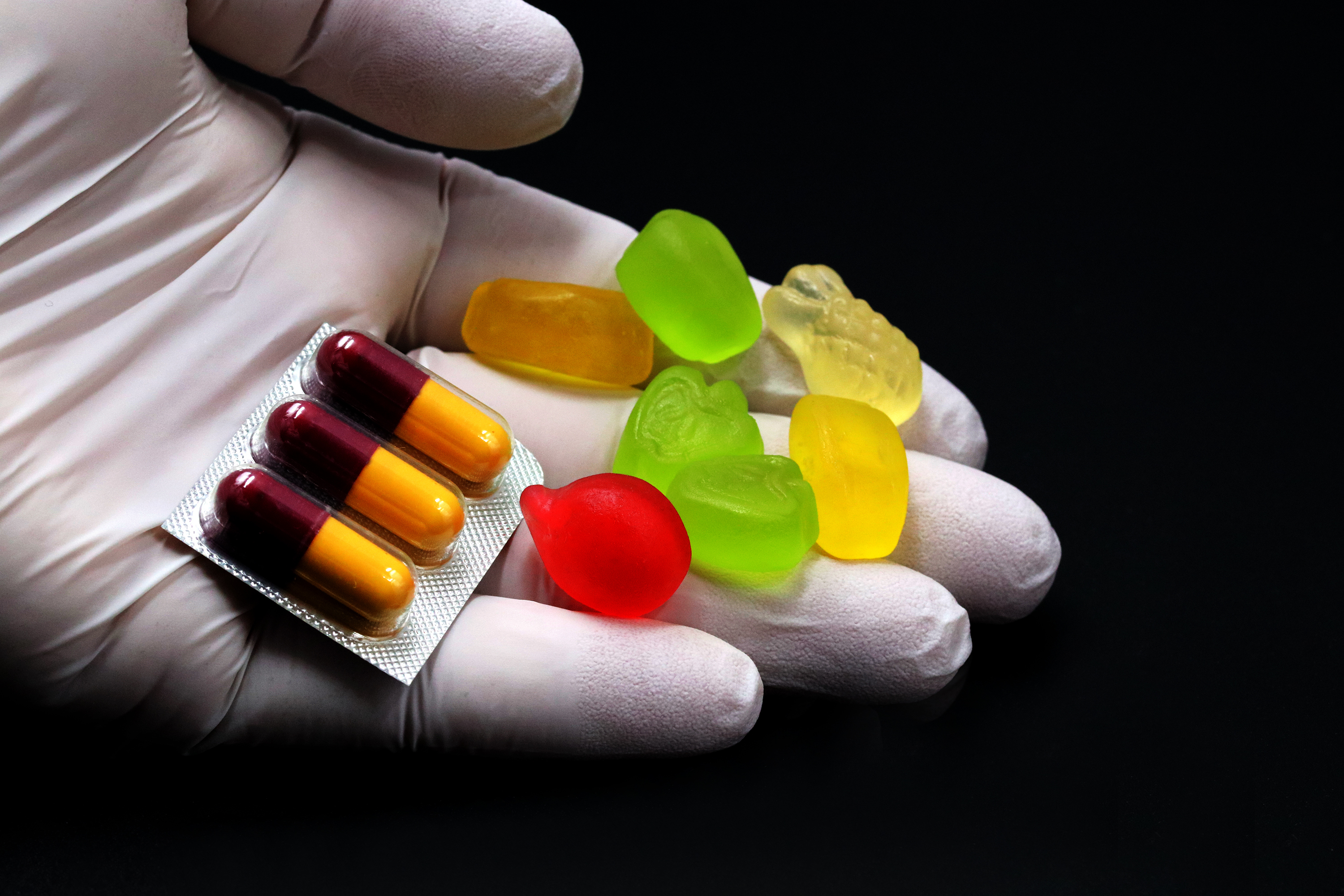 The reason for this massive switch from pills to gummies (aka candyceuticals) is attributed to pill fatigue and swallowing issues. In fact, nearly half of supplement users identified ease of swallowing as an important factor to consider when choosing supplements.2 Ease of swallowing is even more likely to be rated as important by women (54 percent) and adults over the age of 55 (57 percent).2 This is also helping to drive the anti-aging and cosmeceutical beauty supplement space.
The reason for this massive switch from pills to gummies (aka candyceuticals) is attributed to pill fatigue and swallowing issues. In fact, nearly half of supplement users identified ease of swallowing as an important factor to consider when choosing supplements.2 Ease of swallowing is even more likely to be rated as important by women (54 percent) and adults over the age of 55 (57 percent).2 This is also helping to drive the anti-aging and cosmeceutical beauty supplement space.
 The popularity of gummies presents a new opportunity not just for us to meet our sports nutrition and health goals but also for product developers—an opportunity and a challenge. Muscle Insider will discuss everything you need to know about formulating with gummies, including the newest functional ingredients going into them!
The popularity of gummies presents a new opportunity not just for us to meet our sports nutrition and health goals but also for product developers—an opportunity and a challenge. Muscle Insider will discuss everything you need to know about formulating with gummies, including the newest functional ingredients going into them!
What’s Inside a Gummy?
 A gummy is a combination of sugar, gelling agents (usually gelatin or pectin), acidulants, colours, flavours and, of course, the active ingredients they carry. They can also be sugar-free by using sugar alcohols or sweeteners instead of sugar. The formulation can be modified by varying the gelling agents and sugars or adding gums and starches to achieve the proper texture, sweetness and flavour, all while preserving the integrity of the ingredients they provide.
A gummy is a combination of sugar, gelling agents (usually gelatin or pectin), acidulants, colours, flavours and, of course, the active ingredients they carry. They can also be sugar-free by using sugar alcohols or sweeteners instead of sugar. The formulation can be modified by varying the gelling agents and sugars or adding gums and starches to achieve the proper texture, sweetness and flavour, all while preserving the integrity of the ingredients they provide.
Sugar Basics
 One of the biggest components of most gummies is sugar. This can make up as much as 75 percent of the weight of a traditional gummy and is most likely in the form of fine-granulated sucrose (table sugar). Sucrose can provide the soft structure of the gummy and helps provide moisture retention, making it soft to chew, as well as providing the sweetness we all love. Other sugars that are commonly used in gummies are corn syrups, high-fructose corn syrup, fructose, dextrose and maltose. Each can provide a unique texture, moisture retention and sweetness.
One of the biggest components of most gummies is sugar. This can make up as much as 75 percent of the weight of a traditional gummy and is most likely in the form of fine-granulated sucrose (table sugar). Sucrose can provide the soft structure of the gummy and helps provide moisture retention, making it soft to chew, as well as providing the sweetness we all love. Other sugars that are commonly used in gummies are corn syrups, high-fructose corn syrup, fructose, dextrose and maltose. Each can provide a unique texture, moisture retention and sweetness.
Despite traditional sugar’s amazing texture and sweet properties, some of the biggest drawbacks of using sugar are that it provides empty calories, spikes insulin and can cause cavities. Sugar is a big concern with most consumers, especially those who are health conscious. So, when it comes to formulating nutritional supplements as well as functional foods and snacks, all formulators are racing to discover innovative ways to reduce sugar content.
Hold the Sugar: Sweeteners & Polyols
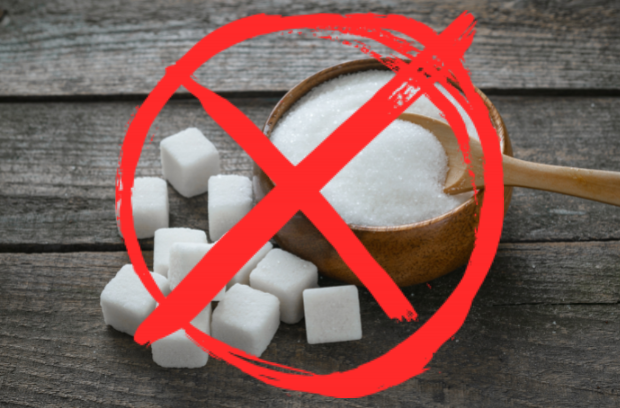 Because sugar provides the bulk, texture and sweetness, it can be a challenge to replace everything with one ingredient. Sugar alcohols, also known as polyols, don’t have the same bulkiness as sugar, but some can provide similar properties.3 Common sugar alcohols include hydrogenated starch hydrolysates, sorbitol, mannitol, xylitol and maltitol.3
Because sugar provides the bulk, texture and sweetness, it can be a challenge to replace everything with one ingredient. Sugar alcohols, also known as polyols, don’t have the same bulkiness as sugar, but some can provide similar properties.3 Common sugar alcohols include hydrogenated starch hydrolysates, sorbitol, mannitol, xylitol and maltitol.3
Unlike sugar-based gummies, which form gels and have a lower pH that buffers the product, sugar-free gummies need to add buffers such as citrate to ensure the pH of the product remains stable and in range for the gel to set and form. The combination of sugar alcohols and sweeteners will also help determine the pH.4
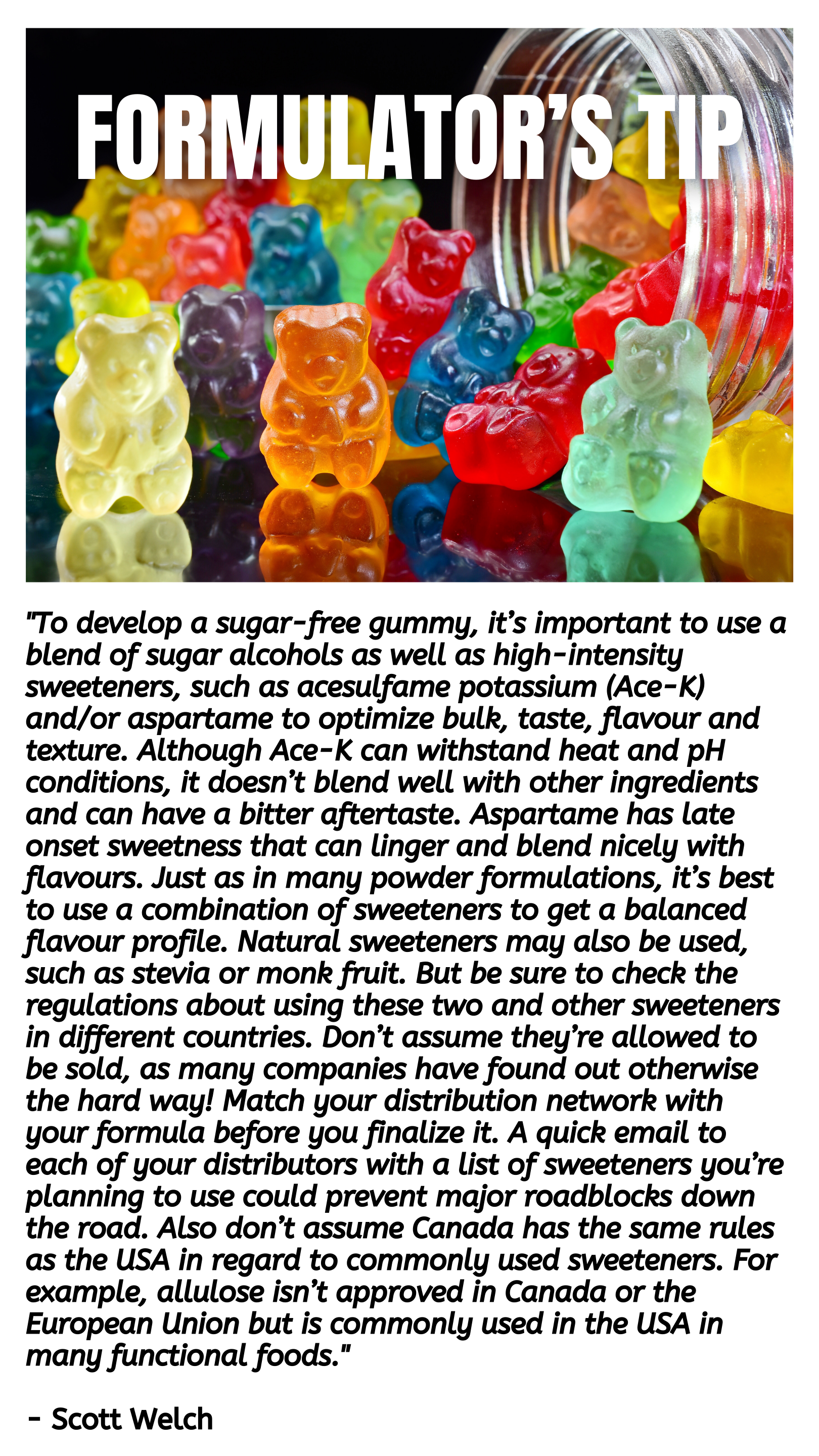
Common Sugar Alcohols & Sweeteners
Hydrogenated Starch Hydrolysates
 Hydrogenated starch hydrolysates (HSHs), also known as polyglycitol syrup, are a mixture of several sugar alcohols. HSHs are made by partial hydrolysis of starch. This creates dextrins (glucose and short glucose chains). The hydrolyzed starch then undergoes hydrogenation to convert the dextrins into sugar alcohols.5 Because the starch isn’t completely hydrolyzed, a mixture of various sugar alcohols result, including sorbitol, maltitol and longer chain hydrogenated saccharides.5 They provide 3 calories per gram. HSHs are non-crystallizing and have humectant properties, which means they can retain water and provide a chewy, sweet texture. This makes them a great alternative to sugar as a bulking agent in gummies. An HSH gummy can be made with a gelatin solution, where it can be combined under heat, dried and cooled and then blended with actives and additives.
Hydrogenated starch hydrolysates (HSHs), also known as polyglycitol syrup, are a mixture of several sugar alcohols. HSHs are made by partial hydrolysis of starch. This creates dextrins (glucose and short glucose chains). The hydrolyzed starch then undergoes hydrogenation to convert the dextrins into sugar alcohols.5 Because the starch isn’t completely hydrolyzed, a mixture of various sugar alcohols result, including sorbitol, maltitol and longer chain hydrogenated saccharides.5 They provide 3 calories per gram. HSHs are non-crystallizing and have humectant properties, which means they can retain water and provide a chewy, sweet texture. This makes them a great alternative to sugar as a bulking agent in gummies. An HSH gummy can be made with a gelatin solution, where it can be combined under heat, dried and cooled and then blended with actives and additives.
Sorbitol
 Sorbitol is made by reduction of glucose, which alters the aldehyde (CHO) group to a primary alcohol group (CH2OH).6 Sorbitol is mostly produced from potato starch. Structurally, sorbitol is like mannitol, but it has different properties.6 Sorbitol is considered a nutritive sweetener because it isn’t calorie free; it provides 2.6 calories per gram. Although it has great humectant and thickening properties, it’s also a laxative.7 Just like other sugar alcohols, sorbitol can cause gastrointestinal distress if consumed in large quantities. Sorbitol draws water into the large intestine, stimulating bowel movements.8 Sorbitol is generally recognized as safe (GRAS) by the FDA.6
Sorbitol is made by reduction of glucose, which alters the aldehyde (CHO) group to a primary alcohol group (CH2OH).6 Sorbitol is mostly produced from potato starch. Structurally, sorbitol is like mannitol, but it has different properties.6 Sorbitol is considered a nutritive sweetener because it isn’t calorie free; it provides 2.6 calories per gram. Although it has great humectant and thickening properties, it’s also a laxative.7 Just like other sugar alcohols, sorbitol can cause gastrointestinal distress if consumed in large quantities. Sorbitol draws water into the large intestine, stimulating bowel movements.8 Sorbitol is generally recognized as safe (GRAS) by the FDA.6
Mannitol
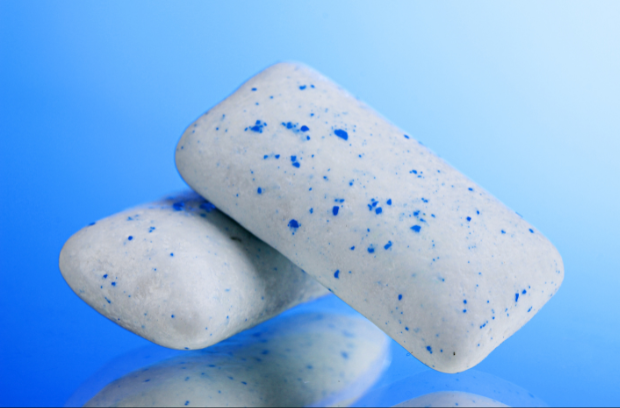 Mannitol is another sugar alcohol commonly used in sugar-free confections, mostly because it’s poorly absorbed by the intestines, leaving little impact on sugar levels in the blood. Mannitol is produced via the hydrogenation of fructose, which is formed from either starch or sucrose.9 The fructose is hydrogenated with a catalyst into an approximately 50 percent mixture of both sorbitol and mannitol.9 Mannitol has a low solubility and can give a cooling effect, making it great in sugar-free gums or mints. It also has a low hygroscopicity, which means it doesn’t absorb water. Thus, it wouldn’t be ideal in gummies and is usually used as a coating for sugar-free gum or hard candies. Mannitol is considered a food additive.
Mannitol is another sugar alcohol commonly used in sugar-free confections, mostly because it’s poorly absorbed by the intestines, leaving little impact on sugar levels in the blood. Mannitol is produced via the hydrogenation of fructose, which is formed from either starch or sucrose.9 The fructose is hydrogenated with a catalyst into an approximately 50 percent mixture of both sorbitol and mannitol.9 Mannitol has a low solubility and can give a cooling effect, making it great in sugar-free gums or mints. It also has a low hygroscopicity, which means it doesn’t absorb water. Thus, it wouldn’t be ideal in gummies and is usually used as a coating for sugar-free gum or hard candies. Mannitol is considered a food additive.
Maltitol
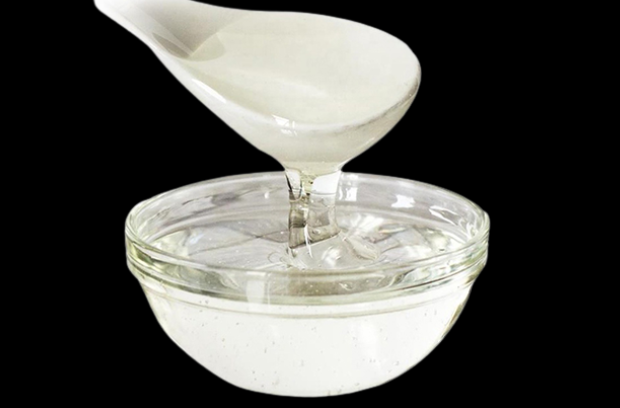 This sugar alcohol is as close as you get to sugar. It has 75 to 90 percent of the sweetness of sucrose with almost the same properties. It also provides the same number of calories as sorbitol, doesn’t promote tooth decay and has a low impact on blood glucose levels. It isn’t digested by the gastrointestinal system but is fermented by bacteria in the intestine, which can lead to GI distress if taken in large quantities.10 Maltitol is produced via hydrogenation of maltose obtained from starch.11 It has humectant properties and isn’t sticky like sugar. Maltitol is commonly used in sugar-free candy, syrups, gums, gummies and chocolates, and combines well with gelatin. Maltitol is pending GRAS status.11
This sugar alcohol is as close as you get to sugar. It has 75 to 90 percent of the sweetness of sucrose with almost the same properties. It also provides the same number of calories as sorbitol, doesn’t promote tooth decay and has a low impact on blood glucose levels. It isn’t digested by the gastrointestinal system but is fermented by bacteria in the intestine, which can lead to GI distress if taken in large quantities.10 Maltitol is produced via hydrogenation of maltose obtained from starch.11 It has humectant properties and isn’t sticky like sugar. Maltitol is commonly used in sugar-free candy, syrups, gums, gummies and chocolates, and combines well with gelatin. Maltitol is pending GRAS status.11
Xylitol
 Unlike other sugar alcohols made from starches and sugar, xylitol is made from biomass. Biomass is agricultural waste from processing wheat, rice or maize, as well as trees. Xylan is extracted from the biomass and hydrolyzed into xylose, which is then hydrogenated to form xylitol.12 Although used as a sugar substitute, it’s much less common than other sugar alcohols on this list. It provides approximately 2 calories per gram and is sweeter in taste than mannitol and sorbitol. It’s mostly used in sugar-free gum because it doesn’t cause cavities. Xylitol is 50 percent absorbed by the intestines, and the remainder is fermented by the bacteria in the gut. It’s also considered a food additive.13
Unlike other sugar alcohols made from starches and sugar, xylitol is made from biomass. Biomass is agricultural waste from processing wheat, rice or maize, as well as trees. Xylan is extracted from the biomass and hydrolyzed into xylose, which is then hydrogenated to form xylitol.12 Although used as a sugar substitute, it’s much less common than other sugar alcohols on this list. It provides approximately 2 calories per gram and is sweeter in taste than mannitol and sorbitol. It’s mostly used in sugar-free gum because it doesn’t cause cavities. Xylitol is 50 percent absorbed by the intestines, and the remainder is fermented by the bacteria in the gut. It’s also considered a food additive.13
Allulose
 This one isn’t technically a sugar alcohol; it’s an epimer of fructose. It’s considered a sugar substitute and is one of the few that is exempted from the sugar content on a nutrition facts label. Allulose provides only 0.4 calories per gram of carbohydrate, which is much lower than most sugar alcohols. It has 70 percent the sweetness of sucrose, with no bitterness, and has a taste profile like sugar. Allulose is minimally metabolized by the gut and can inhibit absorption of glucose via transporters in the intestine.14 It’s also an inhibitor of enzymes that break down starch. Therefore, it has minimal effects on blood glucose levels and has antihyperglycemic properties.14 Like sugar alcohols, it can also cause gastrointestinal distress. Allulose is used in everything from beverages to baked goods to frozen desert. The first major supplement company to use this sweetener was Quest Nutrition in some of its original low-carb protein bars.
This one isn’t technically a sugar alcohol; it’s an epimer of fructose. It’s considered a sugar substitute and is one of the few that is exempted from the sugar content on a nutrition facts label. Allulose provides only 0.4 calories per gram of carbohydrate, which is much lower than most sugar alcohols. It has 70 percent the sweetness of sucrose, with no bitterness, and has a taste profile like sugar. Allulose is minimally metabolized by the gut and can inhibit absorption of glucose via transporters in the intestine.14 It’s also an inhibitor of enzymes that break down starch. Therefore, it has minimal effects on blood glucose levels and has antihyperglycemic properties.14 Like sugar alcohols, it can also cause gastrointestinal distress. Allulose is used in everything from beverages to baked goods to frozen desert. The first major supplement company to use this sweetener was Quest Nutrition in some of its original low-carb protein bars.
Stevia
 Stevia is a natural sugar substitute from the plant Stevia rebaudiana. Stevia is made from a highly refined stevia leaf extract, providing the active steviol glycosides, including rebaudioside and stevioside.3 Stevia’s sweetness can range from 50 to 300 times sweeter than sucrose; thus, it’s usually mixed with other sweeteners such as erythritol, maltodextrin or dextrose when purchased from retail stores. Stevia is heat-stable, pH-stable and non-fermentable.15 It isn’t metabolized by the gut and therefore provides zero calories. Stevia is long-acting and can have a bitter aftertaste in large quantities.15 Stevia has GRAS status.
Stevia is a natural sugar substitute from the plant Stevia rebaudiana. Stevia is made from a highly refined stevia leaf extract, providing the active steviol glycosides, including rebaudioside and stevioside.3 Stevia’s sweetness can range from 50 to 300 times sweeter than sucrose; thus, it’s usually mixed with other sweeteners such as erythritol, maltodextrin or dextrose when purchased from retail stores. Stevia is heat-stable, pH-stable and non-fermentable.15 It isn’t metabolized by the gut and therefore provides zero calories. Stevia is long-acting and can have a bitter aftertaste in large quantities.15 Stevia has GRAS status.
Monk Fruit
 Monk fruit comes from luohan guo, a round green fruit from the Cucurbitaceae family. The fruit is made into a fruit concentrate, and the active sweet compound mogrosides are solvent extracted using a patented process. The inactive compounds that are off in flavour are removed through filtration and evaporation. The sweetness factor is 250 times sweeter than sucrose.16 Monk fruit has GRAS status. It has no calories and has antioxidant benefits. It can be used in a variety of sugar-free products such as beverages or hard and soft candy, as well as in chewable candy such as gummies. Check the legal status of monk fruit for use in foods or supplements, as not all countries have approved it for use.
Monk fruit comes from luohan guo, a round green fruit from the Cucurbitaceae family. The fruit is made into a fruit concentrate, and the active sweet compound mogrosides are solvent extracted using a patented process. The inactive compounds that are off in flavour are removed through filtration and evaporation. The sweetness factor is 250 times sweeter than sucrose.16 Monk fruit has GRAS status. It has no calories and has antioxidant benefits. It can be used in a variety of sugar-free products such as beverages or hard and soft candy, as well as in chewable candy such as gummies. Check the legal status of monk fruit for use in foods or supplements, as not all countries have approved it for use.
Gummy Gelling Agents
 The base of a gummy requires not just sugar or sugar alcohols and sweeteners but also a gelling agent that forms the chewy structure. There are a few options when it comes to formulating, such as gelatin or vegan-based pectin and agar.
The base of a gummy requires not just sugar or sugar alcohols and sweeteners but also a gelling agent that forms the chewy structure. There are a few options when it comes to formulating, such as gelatin or vegan-based pectin and agar.
Gelatin
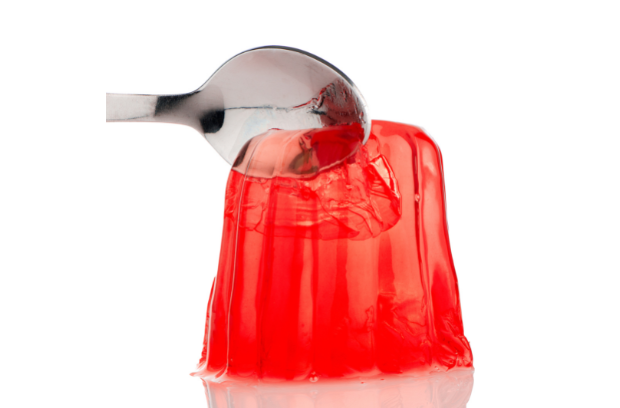 Gelatin is the most common used gelling agent in gummies. Gelatin is made from hydrolyzed collagen—basically, collagen peptides that have undergone hydrolysis into smaller peptides.17 The product is tasteless, odourless and colourless. There are two types of gelatins: Type A (hydrolyzed from pork skin) or Type B (hydrolyzed from beef skin or bone). Generally, Type A is preferred, but mixtures of both types may also be used. Gelatin absorbs 5 to 10 times its weight in water to form a gel.17 Gelatin is used to formulate different sweets including marshmallows, gummy or chewy candy, as well as ice creams, dips and yogurts.
Gelatin is the most common used gelling agent in gummies. Gelatin is made from hydrolyzed collagen—basically, collagen peptides that have undergone hydrolysis into smaller peptides.17 The product is tasteless, odourless and colourless. There are two types of gelatins: Type A (hydrolyzed from pork skin) or Type B (hydrolyzed from beef skin or bone). Generally, Type A is preferred, but mixtures of both types may also be used. Gelatin absorbs 5 to 10 times its weight in water to form a gel.17 Gelatin is used to formulate different sweets including marshmallows, gummy or chewy candy, as well as ice creams, dips and yogurts.
Although gelatin is popular, it has one major flaw: It’s a thermally reversible gel, which means it can melt, causing shelf-life problems. The strength of the gel is important for retaining the structure of a gummy or any other product it’s used in. The higher the gel strength, the less susceptible the product is to degradation.17 Commercial gelatin can have a gel strength of 90 to 300 grams Bloom, which is a measure of gel strength. High temperatures and acidic conditions can also degrade gelatins. Thus, it’s important to store gelatin gummies in cool places. Gelatin can be combined with other gelling agents to improve its melt point and gel strength.
Pectin
 Pectin is a structural acidic heteropolysaccharide found in the cell walls of plants. Its main component is galacturonic acid, a sugar acid derived from galactose.18 It’s extracted mostly from citrus fruits, which yields 30 to 40 percent water-soluble pectin. Because of its structure, pectin can form firm gels when combined with sugars and acids. Pectin gels are less chewy and soft than gelatin gels. They can also reduce the setting time of products they’re used with, which can reduce manufacturing cost. Thus, pectin can be combined with gelatin, sugar and other ingredients, reducing the gel time and reducing remelt temperature, which protects the gummy during storage and shipping if exposed to higher temperatures. Pectin can be used in pie fillings, gummies, chewy candies, jams and jellies.
Pectin is a structural acidic heteropolysaccharide found in the cell walls of plants. Its main component is galacturonic acid, a sugar acid derived from galactose.18 It’s extracted mostly from citrus fruits, which yields 30 to 40 percent water-soluble pectin. Because of its structure, pectin can form firm gels when combined with sugars and acids. Pectin gels are less chewy and soft than gelatin gels. They can also reduce the setting time of products they’re used with, which can reduce manufacturing cost. Thus, pectin can be combined with gelatin, sugar and other ingredients, reducing the gel time and reducing remelt temperature, which protects the gummy during storage and shipping if exposed to higher temperatures. Pectin can be used in pie fillings, gummies, chewy candies, jams and jellies.
Agar
 Agar is a mixture of the polysaccharide agarose and the heterogeneous mixture of small molecules called agaropectin. Together, they form the supporting structure in the cell walls of red algae and can be released when boiled.19 This plant-based jelly substance is often used in desserts throughout Asia, as the culture medium for microbiological testing and as a vegan substitute for gelatin. Agar has a melting point of 85 °C, which means it can be a good alternative to gelatin. It’s semi-translucent white and is approximately 80 percent dietary fibre. Once ingested, agar can absorb water, providing an appetite suppressant effect.20
Agar is a mixture of the polysaccharide agarose and the heterogeneous mixture of small molecules called agaropectin. Together, they form the supporting structure in the cell walls of red algae and can be released when boiled.19 This plant-based jelly substance is often used in desserts throughout Asia, as the culture medium for microbiological testing and as a vegan substitute for gelatin. Agar has a melting point of 85 °C, which means it can be a good alternative to gelatin. It’s semi-translucent white and is approximately 80 percent dietary fibre. Once ingested, agar can absorb water, providing an appetite suppressant effect.20
Putting It All Together!
 Despite developing an understanding about gummies, it can still be hard to come up with an exact formulation when you factor in all the components, gelling, melt time and the actives. One of the best ways to formulate a superior gummy is to trust an expert already making them! NNB Nutrition, a leader in patented branded ingredients, now develops high-quality gummies for white label use. That is, it manufactures them for some of your favorite supplement companies. There are different gummies available that combine gummy technology with some of NNB’s unique ingredients, many of which Muscle Insider has already showcased in the past. These gummies offer:
Despite developing an understanding about gummies, it can still be hard to come up with an exact formulation when you factor in all the components, gelling, melt time and the actives. One of the best ways to formulate a superior gummy is to trust an expert already making them! NNB Nutrition, a leader in patented branded ingredients, now develops high-quality gummies for white label use. That is, it manufactures them for some of your favorite supplement companies. There are different gummies available that combine gummy technology with some of NNB’s unique ingredients, many of which Muscle Insider has already showcased in the past. These gummies offer:
- Beauty and anti-aging support (collagen and MitoPrime L-ergothioneine)
- Adaptogen support (RhodioPrime 6X high salidroside Rhodiola)
- Immunity and anti-aging (Pure MitoPrime L-Ergothioneine)
NNB Nutrition Gummy Technology
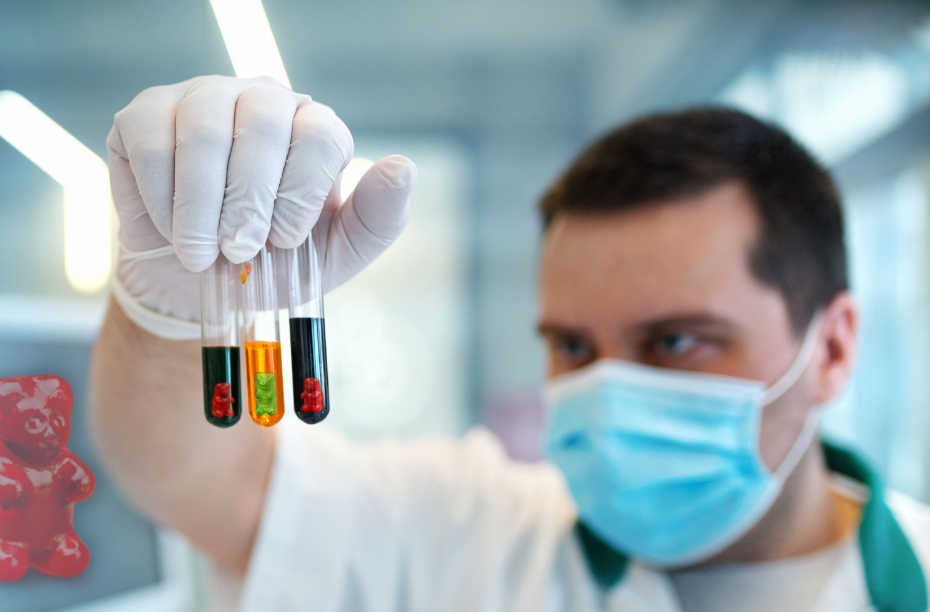 NNB Nutrition’s gummies come with all the important aspects of gummy technology. They are sugar-free, fat-free and non-GMO and use 100 percent natural ingredients. The base combines maltitol and xylitol with gelatin and agar. In addition, they also include natural stevia sweetener along with malic acid, citric acid and natural flavours and colours.
NNB Nutrition’s gummies come with all the important aspects of gummy technology. They are sugar-free, fat-free and non-GMO and use 100 percent natural ingredients. The base combines maltitol and xylitol with gelatin and agar. In addition, they also include natural stevia sweetener along with malic acid, citric acid and natural flavours and colours. 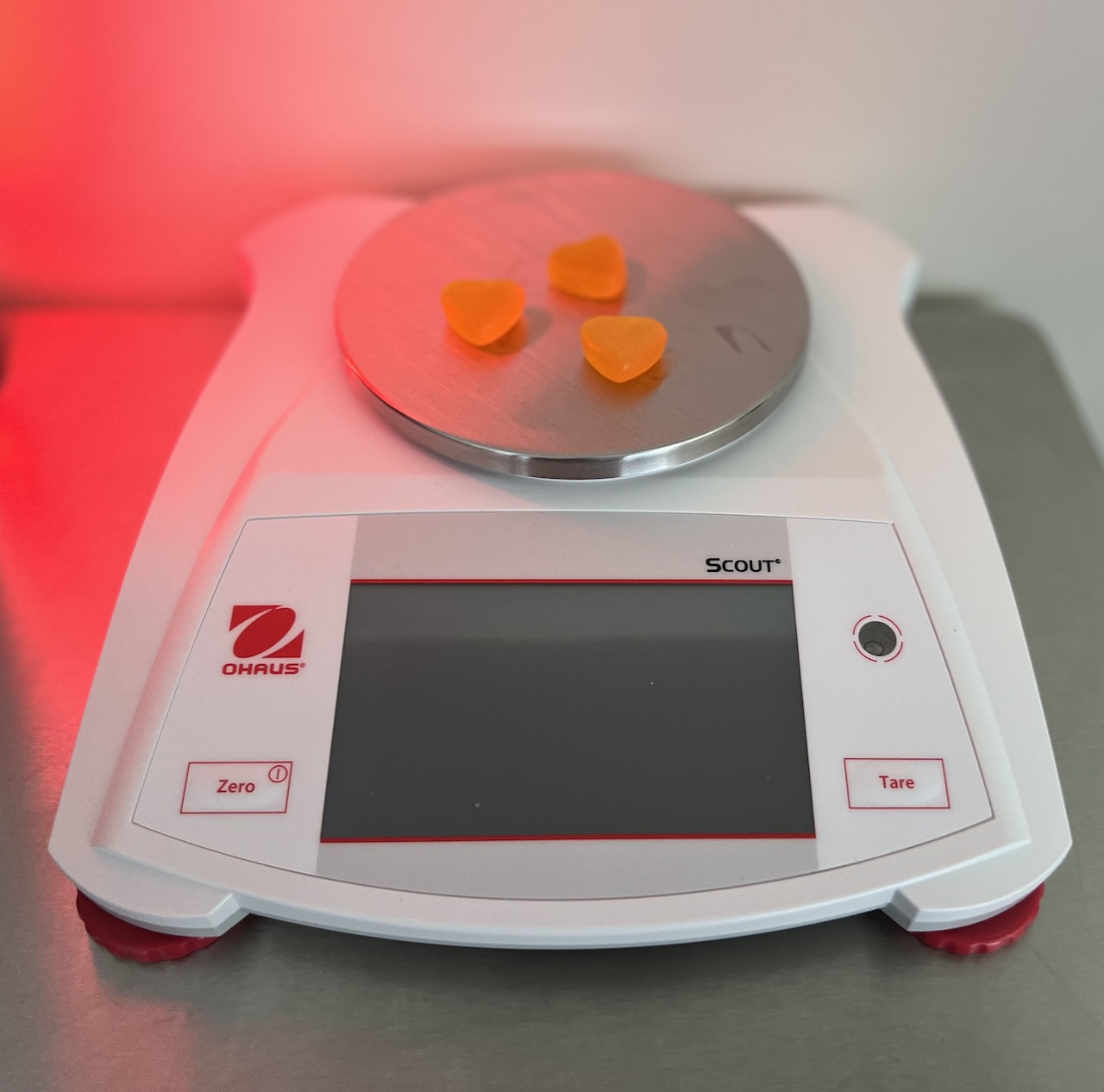 There are also three flavours to choose from—Orange Burst, Raspberry Blast and Zesty Lemon—with new flavours in development, including Succulent Grape and Soothing White Peach Oolong Tea. Each gummy provides approximately 11 calories, 0 grams of fat and sugar, 0.2 grams of protein and only 2.4 grams of carbs.
There are also three flavours to choose from—Orange Burst, Raspberry Blast and Zesty Lemon—with new flavours in development, including Succulent Grape and Soothing White Peach Oolong Tea. Each gummy provides approximately 11 calories, 0 grams of fat and sugar, 0.2 grams of protein and only 2.4 grams of carbs.
Gummy Ingredients
Collagen & MitoPrime L-Ergothioneine
 This product combines the antioxidant power of ergothioneine, the skin-rejuvenating, life-extending, health-promoting, immune-boosting bioactive molecule found in mushrooms, with collagen peptides.21 Each gummy can be dosed to provide 1 to 5 milligrams of ergothioneine. Collagen peptides are provided to help your body’s ability to repair and protect the skin, making this combination of ingredients a perfect entry into the beauty market.
This product combines the antioxidant power of ergothioneine, the skin-rejuvenating, life-extending, health-promoting, immune-boosting bioactive molecule found in mushrooms, with collagen peptides.21 Each gummy can be dosed to provide 1 to 5 milligrams of ergothioneine. Collagen peptides are provided to help your body’s ability to repair and protect the skin, making this combination of ingredients a perfect entry into the beauty market.
RhodioPrime 6X
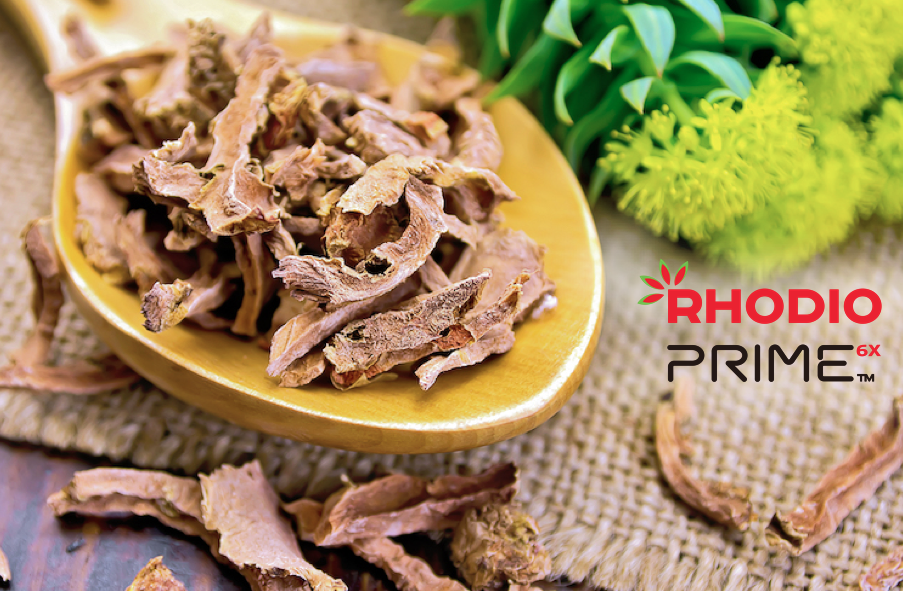 RhodioPrime 6X delivers a highly standardized 6 percent dose of salidroside. Salidroside is the active responsible for most of the beneficial effects of the apoptogenic herb Rhodiola crenulata on vitality, mood and longevity.22 This ingredient stimulates catecholamine activity and uptake, including working on both the dopaminergic and serotonergic system, thereby acting as a nootropic to improve cognition and mood.23 The RhodioPrime 6X gummy is perfect for pre-workouts or even a daily mood or focus boost!
RhodioPrime 6X delivers a highly standardized 6 percent dose of salidroside. Salidroside is the active responsible for most of the beneficial effects of the apoptogenic herb Rhodiola crenulata on vitality, mood and longevity.22 This ingredient stimulates catecholamine activity and uptake, including working on both the dopaminergic and serotonergic system, thereby acting as a nootropic to improve cognition and mood.23 The RhodioPrime 6X gummy is perfect for pre-workouts or even a daily mood or focus boost!
Three Packaging Options

There are three packaging options to choose from when it comes to white labeling NNB Nutrition’s gummies.
- Fully packaged, providing 45 individually wrapped gummies of your choice in a sealed box.
- Individually wrapped—choose your own packaging and just get the number of individually wrapped gummies needed to fulfill.
- Without any packaging or wrapper—sell in the bottle of your choosing.
Innovative Ingredients + Superior Gummy Technology
 The gummy market explosion in recent years has resulted in everyone jumping into the gummy game with mostly the same offerings. If you’re looking to develop a unique gummy product that stands out among this already crowded market, consider partnering with NNB Nutrition. There are no wait times, no massive MOQs and no risk that the formula you’re creating won’t fit into the gummy or, worse, cause degradation and melting. NNB Nutrition combines high-quality, researched and innovative ingredients with a superior gummy technology.
The gummy market explosion in recent years has resulted in everyone jumping into the gummy game with mostly the same offerings. If you’re looking to develop a unique gummy product that stands out among this already crowded market, consider partnering with NNB Nutrition. There are no wait times, no massive MOQs and no risk that the formula you’re creating won’t fit into the gummy or, worse, cause degradation and melting. NNB Nutrition combines high-quality, researched and innovative ingredients with a superior gummy technology.
 If you would like more information on NNB Nutrition and what it offers, visit nnbnutrition.com.
If you would like more information on NNB Nutrition and what it offers, visit nnbnutrition.com.
References
- Nutrition Business Journal. 2022 Delivery Format Report. https://store.newhope.com/products/delivery-format-report-2022. Published 2022. Accessed July 15, 2022.
- Council for Responsible Nutrition. 2020 CRN Consumer Survey. https://www.crnusa.org/resources/2020-crn-consumer-survey-dietary-supplements. Published 2021. Accessed July 15, 2022.
- Grembecka M. Natural sweeteners in the human diet. Rocz Panstw Zakl Hig. 2015;66(3):195-202.
- Deis RC. Customizing sweetness profiles. Food Product Design. 2006 Nov;15(11).
- Wheeler ML, Fineberg SE, Gibson R, Fineberg N. Metabolic responses to oral challenge of hydrogenated starch hydrolysate versus glucose in diabetes. Diabetes Care. 1990 Jul;13(7):733-40. doi: 10.2337/diacare.13.7.733.
- Sorbitol. Compound Summary. PubChem. NIH.
- McRorie J, Zorich N, Riccardi K, et al. Effects of olestra and sorbitol consumption on objective measures of diarrhea: impact of stool viscosity on common gastrointestinal symptoms. Regul Toxicol Pharmacol. 2000 Feb;31(1):59-67. doi: 10.1006/rtph.1999.1368.
- Peters R, Lock RH. Laxative effect of sorbitol. Br Med J. 1958 Sep 13; 2(5097): 677–678. doi: 10.1136/bmj.2.5097.677.
- PubChem. Compound Summary: Mannitol. https://pubchem.ncbi.nlm.nih.gov/compound/6251. Accessed July 15, 2022.
- Oku T, Akiba M, Lee MH, Moon SJ, Hosoya N. Metabolic fate of ingested [14C]-maltitol in man. J Nutr Sci Vitaminol (Tokyo). 1991 Oct;37(5):529-44. doi: 10.3177/jnsv.37.529.
- PubChem. Compound Summary: Maltitol. https://pubchem.ncbi.nlm.nih.gov/compound/493591. Accessed July 15, 2022.
- Ur-Rehman S, Mushtaq Z, Zahoor T, Jamil A, Murtaza MA. Xylitol: a review on bioproduction, application, health benefits, and related safety issues. Crit Rev Food Sci Nutr. 2015;55(11):1514-28. doi: 10.1080/10408398.2012.702288.
- PubChem. Compound Summary: Xylitol. https://pubchem.ncbi.nlm.nih.gov/compound/6912. Accessed July 15, 2022.
- Hossain A, Yamaguchi F, Matsuo T, et al. Rare sugar D-allulose: Potential role and therapeutic monitoring in maintaining obesity and type 2 diabetes mellitus. Pharmacol Ther. 2015 Nov;155:49-59. doi: 10.1016/j.pharmthera.2015.08.004.
- PubChem. Compound Summary: Stevia rebaudiana, ext. https://pubchem.ncbi.nlm.nih.gov/compound/13370031. Accessed July 15, 2022.
- Itkin M, Davidovich-Rikanati R, Cohen S, et al. The biosynthetic pathway of the nonsugar, high-intensity sweetener mogroside V from Siraitia grosvenorii. Proc Natl Acad Sci U S A. 2016 Nov 22;113(47):E7619-E7628. doi: 10.1073/pnas.1604828113.
- Mariod AA, Adam HF. Review: gelatin, source, extraction and industrial applications. Acta Sci Pol Technol Aliment. 2013;12(2):133-47.
- PubChem. Compound Summary: Pectin. https://pubchem.ncbi.nlm.nih.gov/compound/441476. Accessed July 15, 2022.
- PubChem. Compound Summary: Agar. https://pubchem.ncbi.nlm.nih.gov/compound/71571511. Accessed July 15, 2022.
- Cheong KL, Qiu HM, Du H, Liu Y, Khan BM. Oligosaccharides derived from red seaweed: production, properties, and potential health and cosmetic applications. Molecules. 2018 Sep 25;23(10):2451. doi: 10.3390/molecules23102451.
- Cheah IK, Halliwell B. Ergothioneine; antioxidant potential, physiological function and role in disease. BiochimBiophys Acta. 2012 May;1822(5):784-93. doi: 10.1016/j.bbadis.2011.09.017.
- Panossian A, Wikman G, Sarris J. Rosenroot (Rhodiola rosea): traditional use, chemical composition, pharmacology and clinical efficacy. Phytomedicine. 2010 Jun;17(7):481-93. doi: 10.1016/j.phymed.2010.02.002.
- Zhong ZF, Han J, Zhang JZ, et al. Neuroprotective effects of salidroside on cerebral ischemia/reperfusion-induced behavioral impairment involves the dopaminergic system. Front Pharmacol. 2019 Dec 13;10:1433. doi: 10.3389/fphar.2019.01433.

